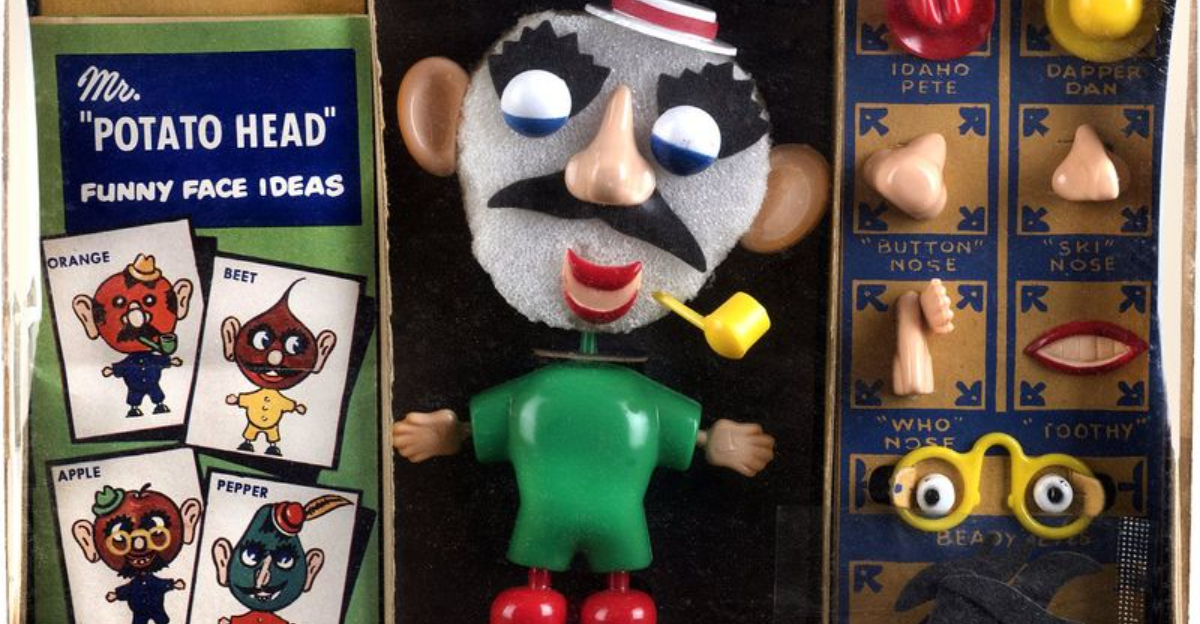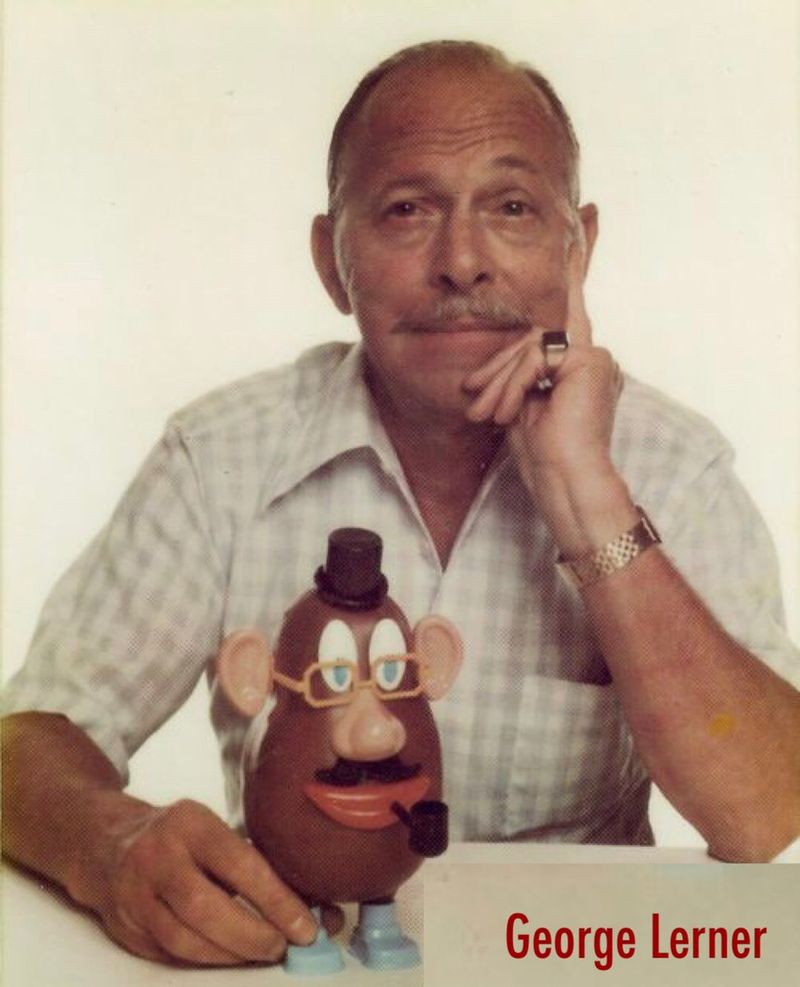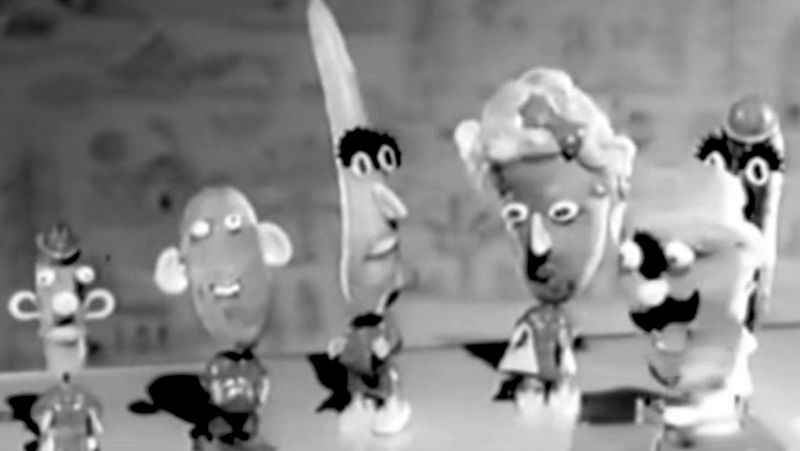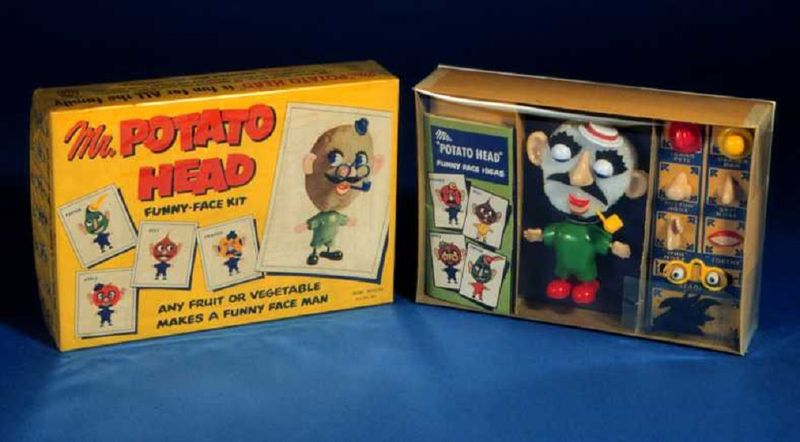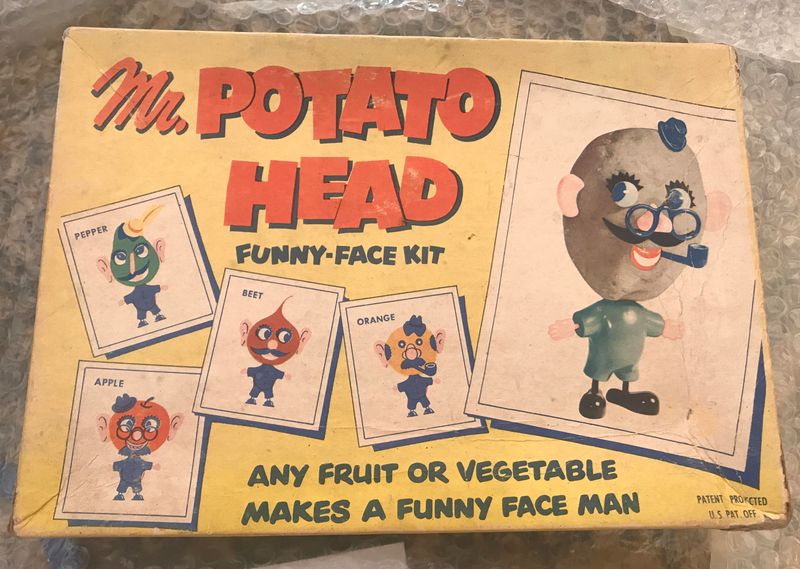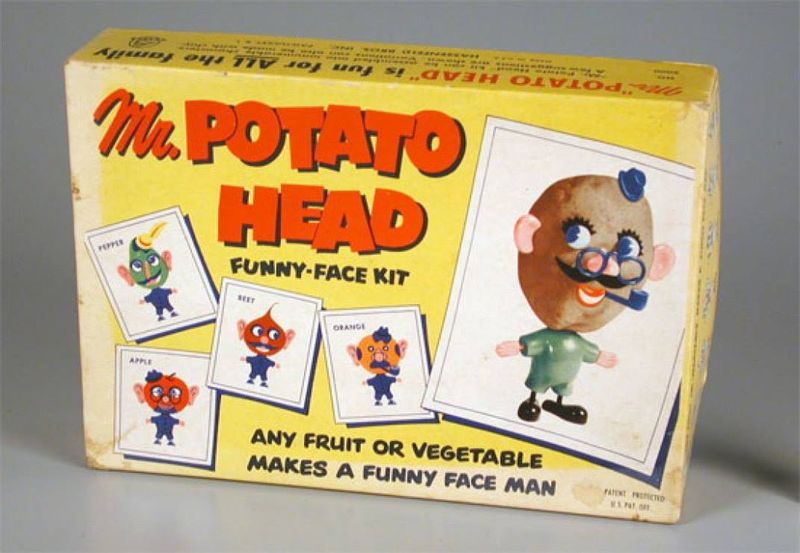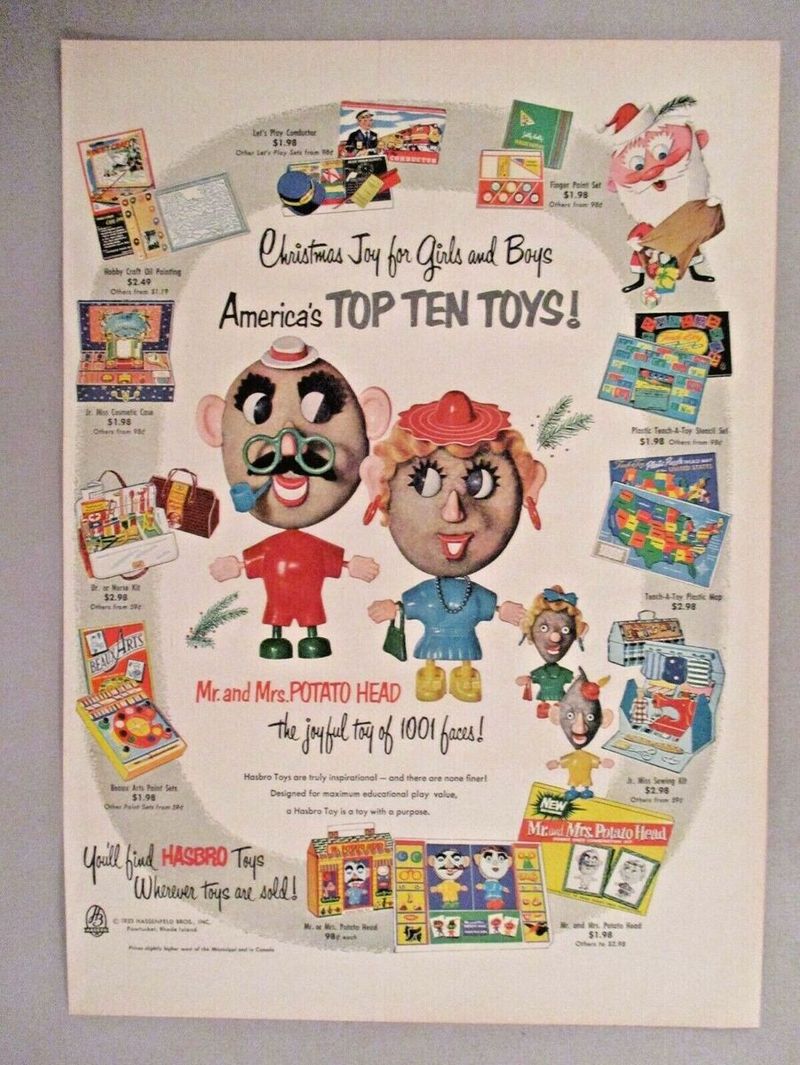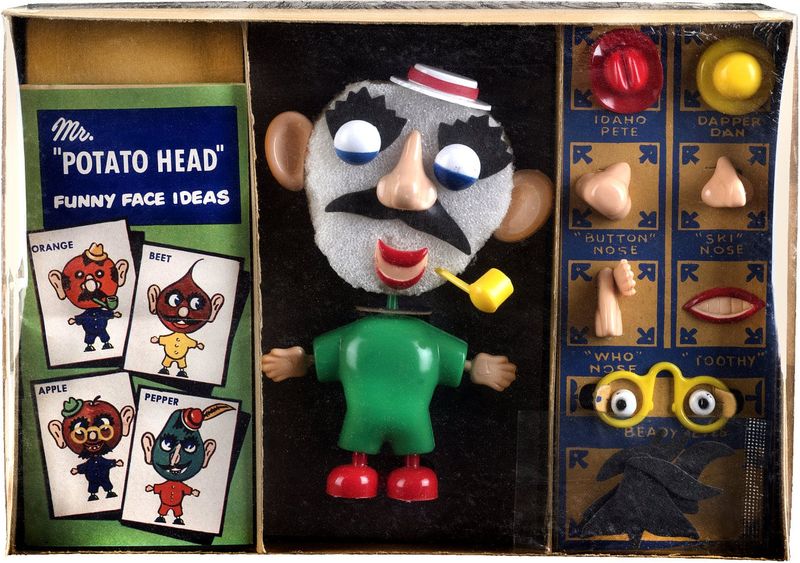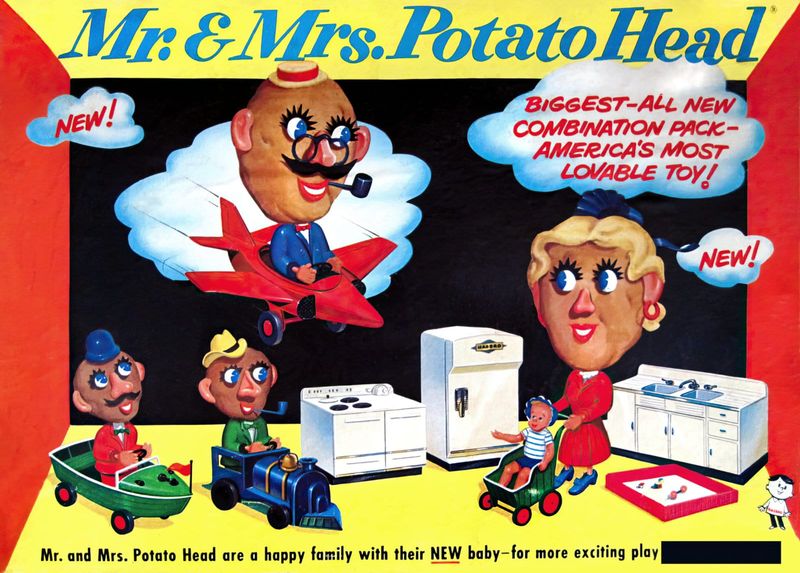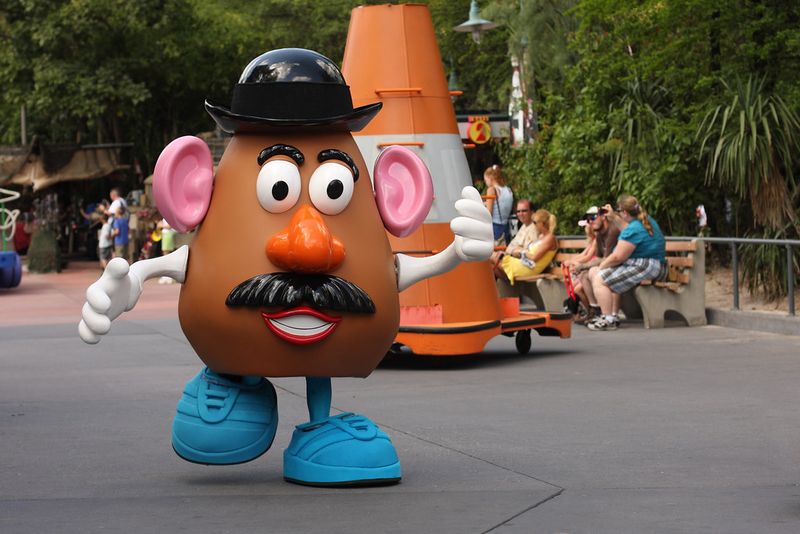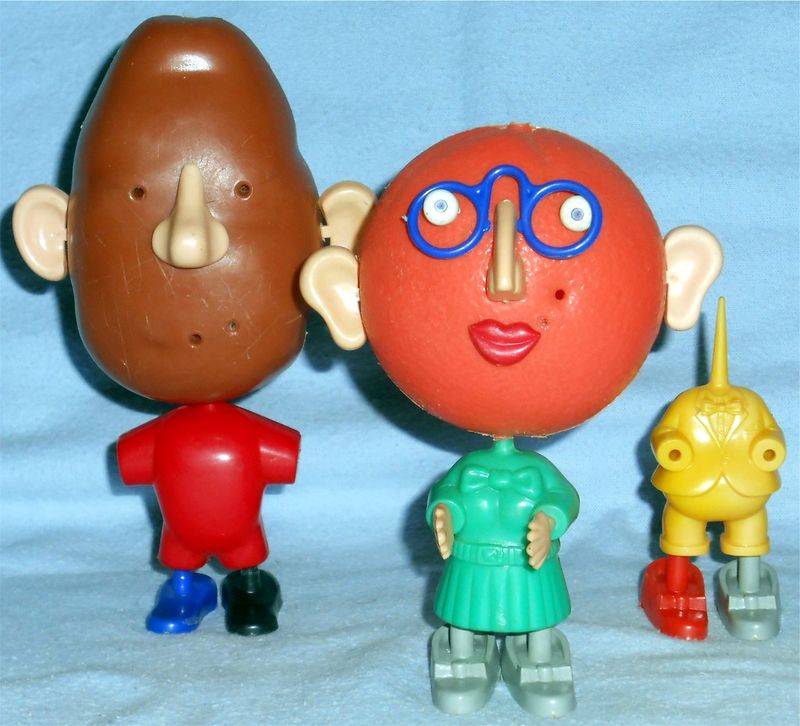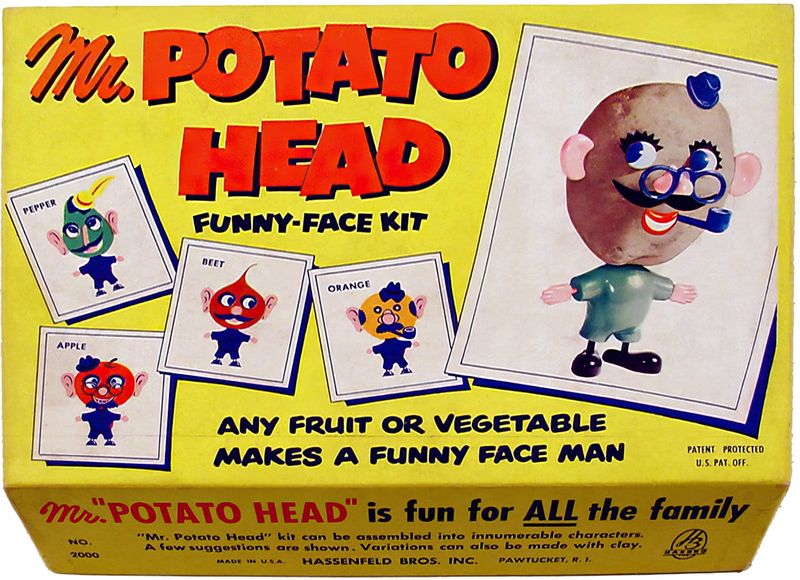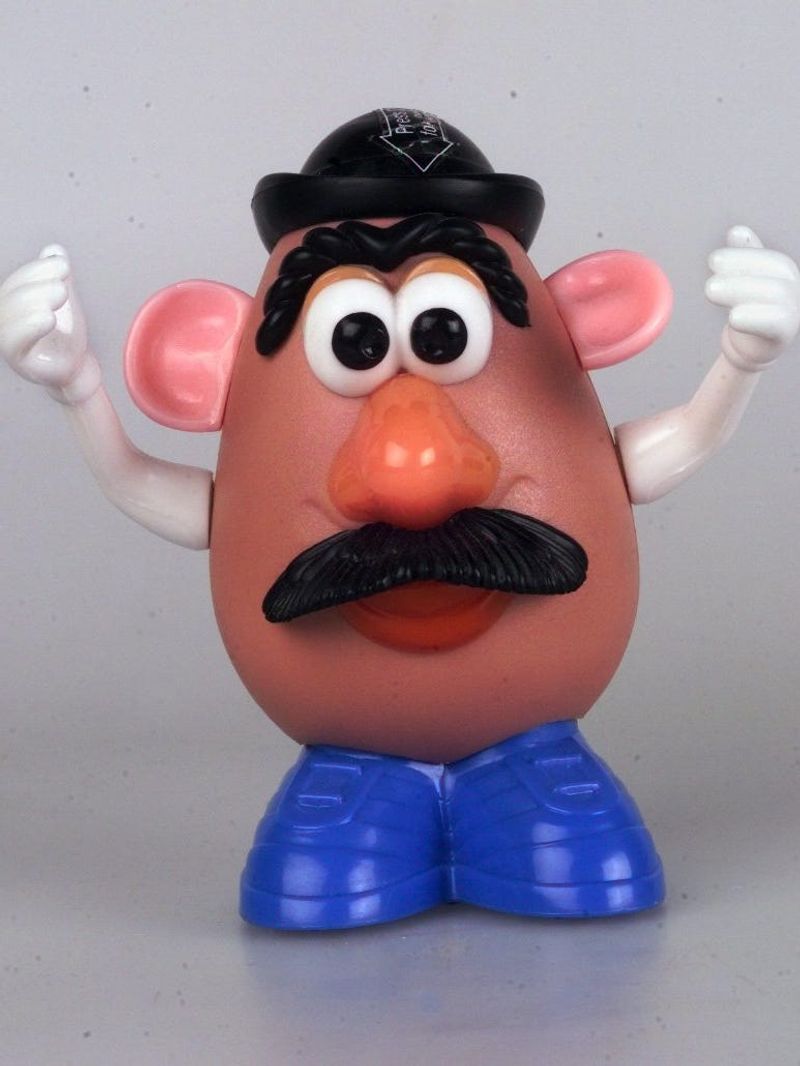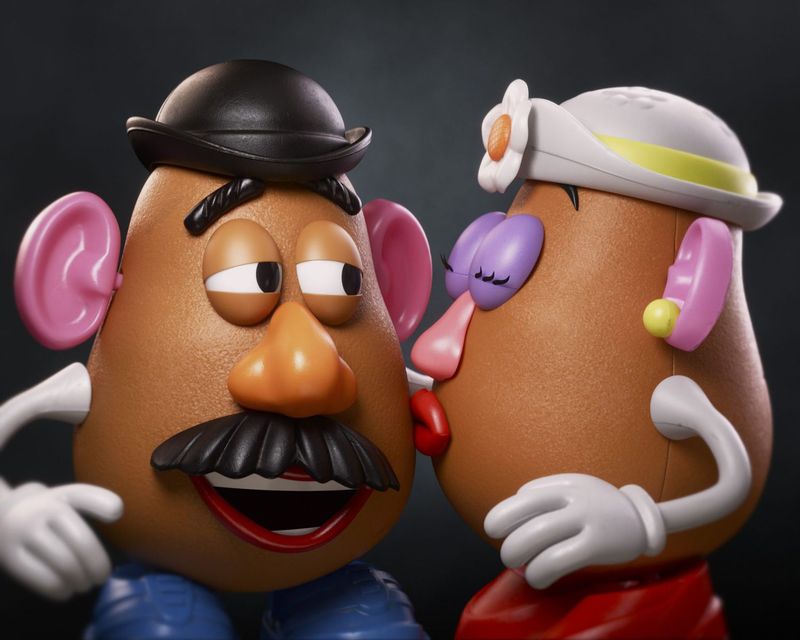Mr. Potato Head wasn’t just a toy—it was a cultural breakthrough. Introduced in the early 1950s, it captivated kids and revolutionized toy marketing. Here are 15 intriguing facts about the origins and impact of this beloved classic:
1. Invented by George Lerner
George Lerner, a visionary commercial artist, first imagined a world where children could bring fruits and vegetables to life. He saw ordinary produce as more than just food; in the 1940s, he dreamt of playful faces emerging from apples and potatoes. This imaginative leap led to the creation of Mr. Potato Head. Lerner’s invention allowed children to explore creativity in a whole new way. By transforming common kitchen items into playful characters, he expanded the boundaries of traditional play. His idea was a seed that would grow into a beloved staple in playrooms worldwide.
2. Launched by Hasbro in 1952
April 30, 1952, marked a new era in the toy industry as Mr. Potato Head hit the shelves, thanks to Hasbro’s keen eye for innovation. The company recognized the potential in George Lerner’s unique idea and decided to invest in it. With a launch that was both exciting and unprecedented, Hasbro introduced Mr. Potato Head to eager children and parents. The excitement was palpable, capturing the imaginations of an entire generation. Hasbro’s decision to bring Lerner’s creation to life was a pivotal moment that changed the landscape of toys forever.
3. First Toy Ever Advertised on Television
In 1952, Mr. Potato Head broke new ground by becoming the first toy ever advertised on television. This was a revolutionary step in marketing, as TV was an emerging medium with the power to reach millions. The commercial showed children how fun it could be to play with this quirky toy. Parents, too, were captivated by the idea, seeing it as a novel way to engage their kids in imaginative play. This bold move set the stage for future toy marketing and demonstrated the enormous potential of television advertising.
4. Originally Used Real Vegetables
Before plastic potatoes, kids used real vegetables to create their very own Mr. Potato Head. The original kits came without the spud; children had to supply their own, turning everyday kitchen staples into interactive toys. This added an element of hands-on creativity, allowing kids to experiment with different shapes and sizes of produce. Imagine the delight of transforming a lumpy potato into a funny-faced character! Although practical concerns eventually led to plastic versions, the original concept emphasized resourcefulness and creativity in playtime.
5. Sold Over 1 Million Units in the First Year
The success of Mr. Potato Head was nothing short of phenomenal. In its debut year, more than one million units flew off the shelves, capturing the hearts of children nationwide. This toy was not just a passing fad; it became a staple in homes across America. Parents appreciated its affordability and the creative potential it offered. The overwhelming demand reflected a shift in consumer behavior, as families were eager to embrace new and innovative toys. Mr. Potato Head’s instant popularity set a precedent for other toys to follow.
6. Cost Less Than a Dollar
At just $0.98, Mr. Potato Head was an accessible delight for families of the 1950s. This modest price point made it possible for many children to enjoy the novelty of creating their own potato characters. For less than a dollar, kids received a kit brimming with possibilities, sparking hours of imaginative play. The affordability of Mr. Potato Head contributed significantly to its widespread appeal and success. It was a toy that didn’t just enter homes; it became a cherished part of childhood, offering both joy and creativity on a budget.
7. Mrs. Potato Head Joined the Line in 1953
The Potato Head family grew in 1953 with the introduction of Mrs. Potato Head, adding a delightful new dimension to imaginative play. This expansion introduced gender diversity, allowing children to create family scenarios and explore new narratives. Mrs. Potato Head brought her own unique accessories, encouraging kids to mix and match for endless fun. The addition of family members like Brother Spud and Sister Yam followed, broadening the play experience. Together, they formed a potato family that children could relate to, enhancing the humanity of this playful world.
8. The Set Included Over 30 Parts
With over 30 pieces, Mr. Potato Head kits were a treasure trove of possibilities. The assortment included eyes, mouths, hats, glasses, and more, each crafted from colorful plastic. This variety invited children to express their creativity by building countless unique characters. Each piece had its own personality, adding layers of depth and humor to playtime. The mix-and-match nature of the set meant that no two creations were ever the same. This wealth of parts not only entertained but also encouraged kids to think outside the box.
9. Encouraged Creative Play
Mr. Potato Head was more than just a toy; it was a tool for unleashing creativity. By allowing kids to rearrange facial features and accessories, it inspired endless combinations and storylines. This kind of open-ended play promoted problem-solving and artistic expression, helping children develop cognitive skills in a fun, engaging way. The toy’s versatility meant that each play session was a new adventure, fostering imagination and innovation. Mr. Potato Head didn’t just entertain; it educated, providing valuable lessons wrapped in playful experiences.
10. Led to Licensing and Media Fame
Mr. Potato Head didn’t just stay in the toy box; it leapt into the spotlight with appearances in commercials, cartoons, and movies. The character’s striking features and cheeky personality made it a natural fit for media. Its role in the beloved Toy Story films further cemented its status as a pop culture icon. This leap from toys to screens demonstrated the power of licensing and branding, opening doors for other toys to find fame beyond the shelves. Mr. Potato Head’s journey to stardom was a testament to its enduring charm and appeal.
11. Early Safety Issues Prompted Change
Concerns about safety in the 1960s led to a significant redesign of Mr. Potato Head. Although beloved, the original parts were small and sharp, posing potential hazards. In response, Hasbro introduced a plastic potato body and larger, safer accessories. This change not only addressed parental concerns but also modernized the toy’s design. The redesigned Mr. Potato Head maintained its playful essence while ensuring safety for young children. This evolution highlighted the importance of adapting to consumer needs and maintaining trust in beloved products.
12. Promoted Healthy Eating—At First
Mr. Potato Head’s early marketing cleverly played on its vegetable theme to promote healthy eating habits. The idea of using real vegetables for play was seen as a way to make eating greens more appealing to kids. Though it humorously involved poking holes in produce, the concept was novel and engaging. This blend of play and health education was a unique approach to encouraging nutritious habits. Over time, the focus shifted as plastic potatoes became the norm, but the toy’s origins in real produce left a lasting impression.
13. Was a Gateway to Toy Branding
Mr. Potato Head was a trailblazer in the realm of toy branding, proving the effectiveness of TV advertising. Its success showed how powerful targeted marketing could be, particularly when focused on children. This breakthrough set the standard for future toy campaigns, demonstrating that a compelling character could capture the public’s imagination. The toy’s branding was as innovative as its design, forging a path for countless toys to follow. By capturing both the hearts and minds of children, Mr. Potato Head became a case study in successful toy branding.
14. Inducted into the National Toy Hall of Fame
In 2000, Mr. Potato Head was honored with induction into the National Toy Hall of Fame, recognizing its impact on play and culture. This accolade celebrated the toy’s historical significance and enduring appeal. As a staple in toy collections for decades, Mr. Potato Head had become more than a plaything; it was a cultural touchstone. Its inclusion in the Hall of Fame underscored its role in shaping the toy industry and delighting generations. This honor was a fitting tribute to a toy that had charmed both young and old alike.
15. Still Going Strong Today
Even today, Mr. Potato Head remains a beloved fixture in toy aisles, evolving with the times while retaining its classic charm. The toy has seen numerous updates, incorporating modern trends and technology to stay relevant. From themed sets to interactive features, Mr. Potato Head continues to captivate new generations. This ability to adapt while preserving its core appeal is a testament to its timelessness. As it marches into the future, Mr. Potato Head proves that with a bit of creativity, even a simple spud can become an enduring icon.
